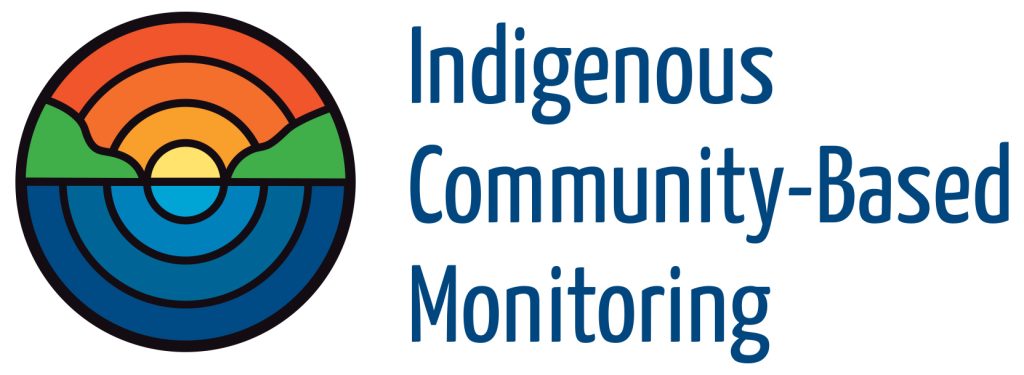
Alberta Oil Sands Monitoring Program
As we commence this program to support water quality monitoring for Indigenous communities in the oil sands regions, it is essential to recognize that the lands we are working on are Treaty 6 and 8 Territory. These are the traditional and ancestral lands that have been cared for by the Cree, Dene, Blackfoot, Saulteaux and Nakota Sioux First Nations of both past and present. We acknowledge that these lands are home to the Métis Settlements and Métis Territories of Lesser Slave Lake, Lower Athabasca and North Saskatchewan River. We express our gratitude to the traditional Knowledge Keepers and Elders, both who are still with us today and those who have gone before us. We make this acknowledgement as a gesture of respect and a sincere commitment to fostering strong partnerships with the communities on whose territories we live and visit. ALMS is dedicated to supporting First Nation and Métis communities in achieving their water monitoring objectives.
Shortcuts:
- Overview
- Field Equipment
- Shipping Information
- Data Reporting
- Additional Resources
- Training Webinars
- GPS Coordinate Tips
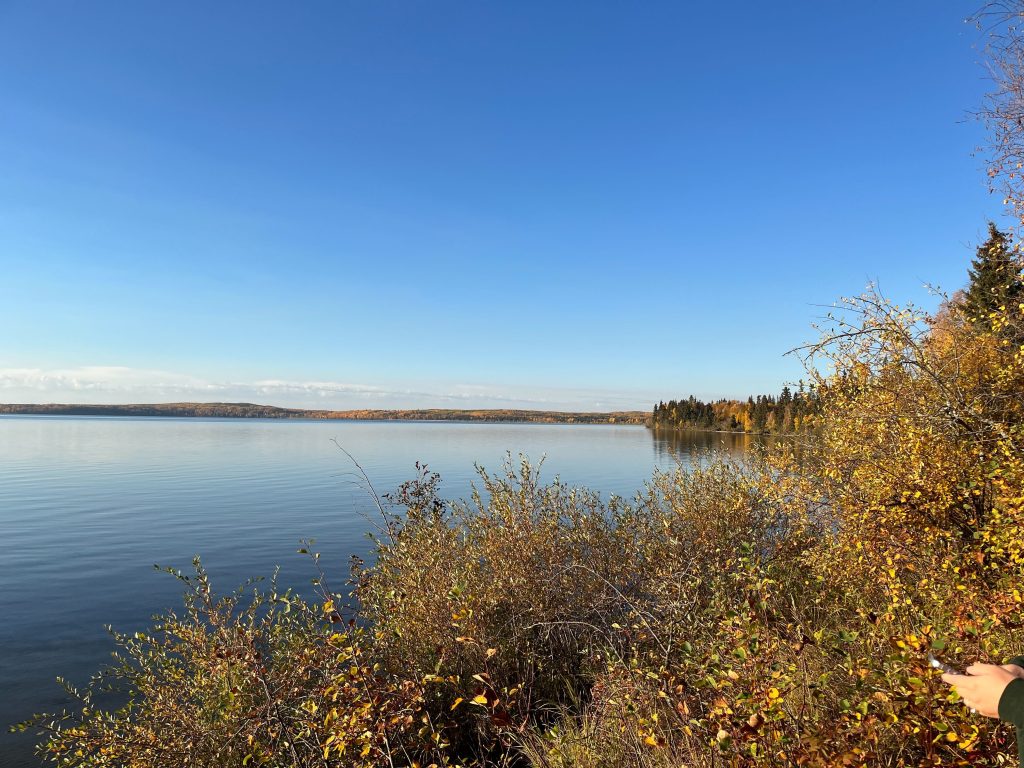
What is the Oil Sands Monitoring Program?
The Oil Sands Monitoring (OSM) Program was an initiative established in 2012, that was led by both the Alberta provincial and federal governments to work alongside the oil sands industries, to monitor and assess cumulative impacts oil sands development has on Alberta’s northern boreal habitat. This program involves environmental data collection and assessment through multiple partners and stakeholders from industry, NGO’s, regulators and Indigenous communities.
What is the Indigenous Community Based Monitoring Program?
The Indigenous Community-Based Monitoring (ICBM) Program is funded through the Oil Sands Monitoring Program, and was designed to encourage and support Indigenous led environmental monitoring projects within the oil sands regions of Alberta. Through this program, ALMS will focus on providing training, monitoring equipment, sample processing and technical advice for water quality sampling on lakes chosen by the participating communities.
If a community is interested in joining the program, a work plan must be submitted and will be reviewed by the OSM Governance Committees. The plan will describe key components the proposed project will address, such as actions towards environmental protection and conservation, opportunities for outreach and community engagement, a budget estimate and a data management plan to store and share data collected.
Field Equipment:
Participating communities in the ICBM Program will be provided with the following sampling equipment:
- A YSI ProSolo probe
- Nutrient sample bottles
- Microcystin sample bottle
- Isotopes sample bottle
- Routine chemistry sample bottle
- Metals sample bottle
- Mercury sample bottle(s)
- Polycyclic Aromatic Hydrocarbons (PAHs) sample bottle(s)
- Chlorophyll-a sample bottle
- Chlorophyll-a filtering kit
- Field sheets
- Instruction guide
- Sampling gloves
- Sample preservatives
- Tape and Weight
- Hot water bottle
- Secchi disk
Shipping Information:
Samples are delivered back to the Alberta Lake Management Society office in Edmonton for analysis and reporting. Samples may be shipped to the office, or hand delivered. Below is a list of available couriers (not limited to though) participating communities can use to ship samples back to our office:
PUROLATOR:
It is important to keep samples cold with ice packs and to tape the coolers shut when shipping back to the office. Our shipping address is 4816 89 St, Edmonton, AB, T6E 5K1.
The 2024 summer sampling season has wrapped up! Winter sampling will run through December-March:
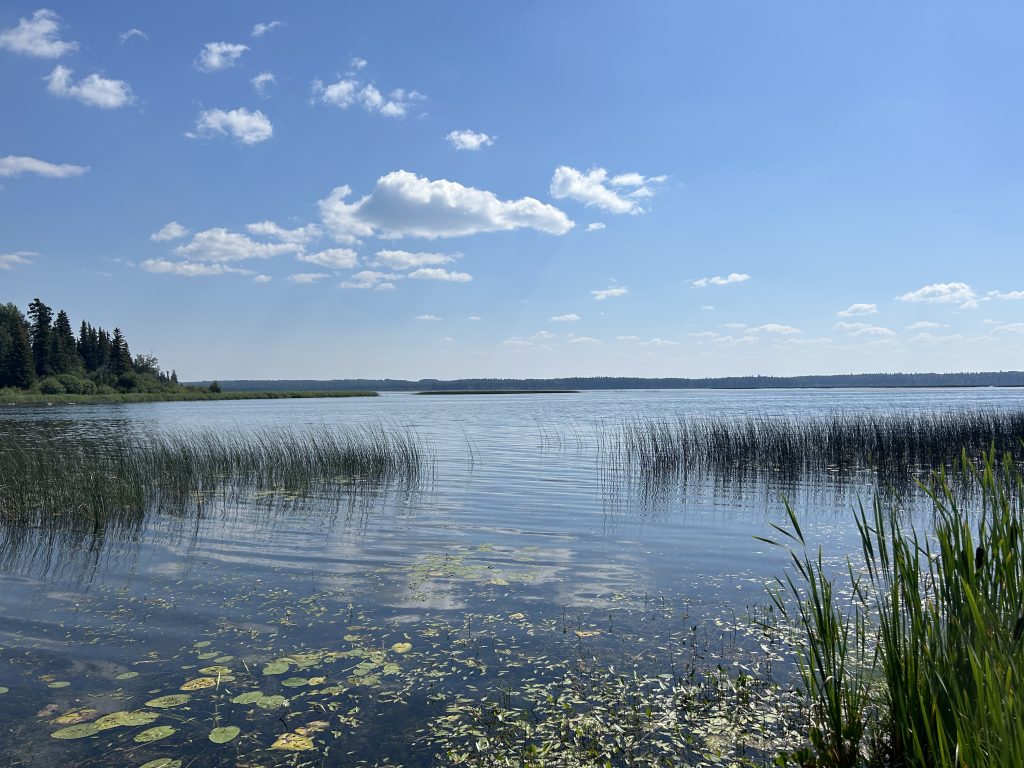
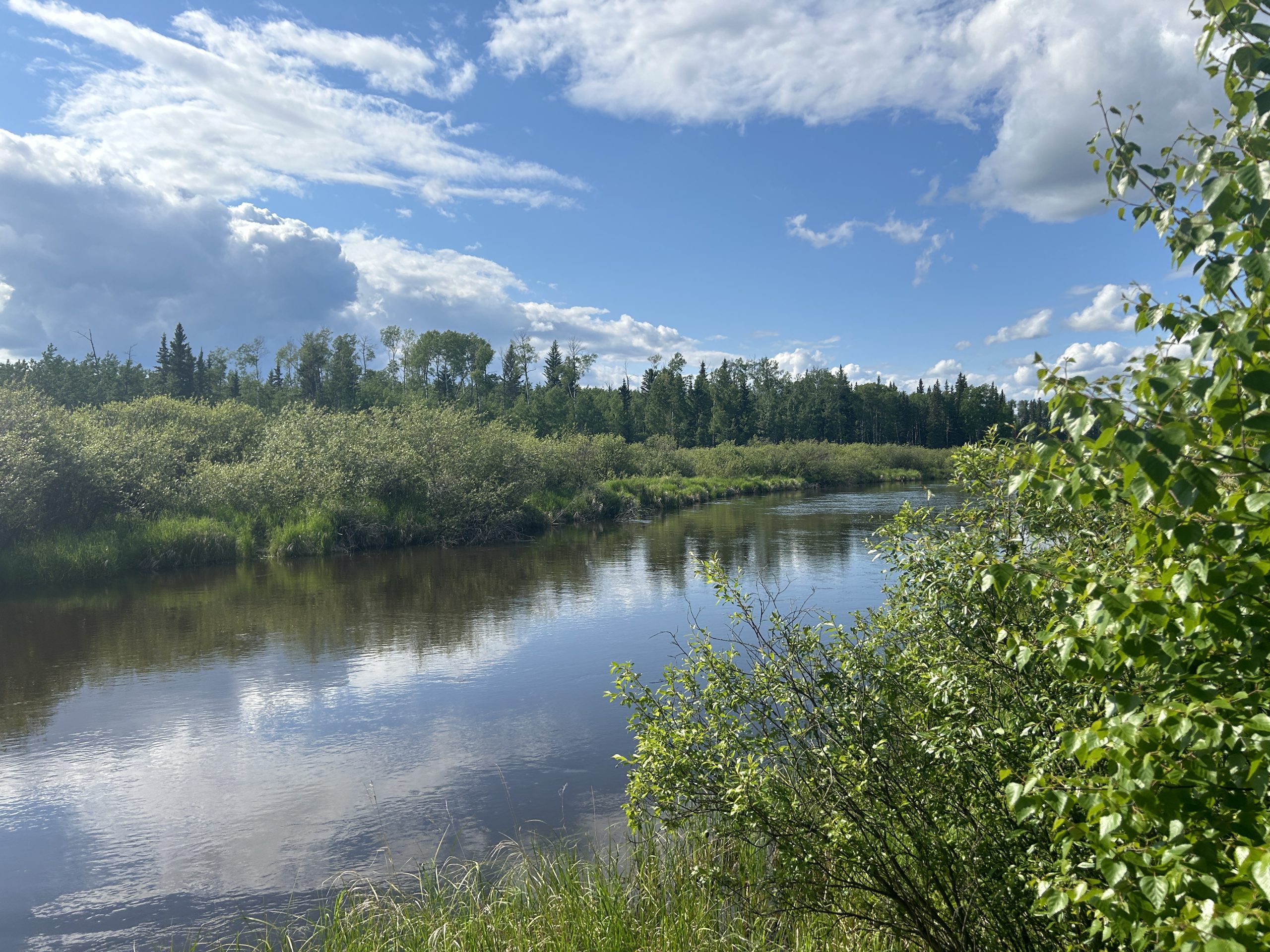
Additional Resources for Communities:
INSTRUCTION GUIDE: Communities can find the Summer Sampling Manual here, in order to review and follow the sampling protocol and bottle storage.
SUMMER FIELD SHEETS: Participants can print additional field sheets if needed, but they will also be provided in the sampling kits.
WINTER FIELD SHEETS: Participants can print additional field sheets if needed, but they will also be provided in the sampling kits.
SECCHI DISK TUTORIAL: In 2022, the Pigeon Lake Watershed Association collaborated with ALMS to develop a training video on how to measure secchi depth on a lake.
ALMS BOAT SAFETY GEAR LIST: A lot of this gear is optional but highly recommended to have on your vessel. Please contact ALMS if your community would like us to order any additional gear.
ALMS ICE SAFETY GEAR LIST: This is some common gear ALMS uses when going onto the ice. Please contact ALMS if your community would like us to order any additional gear.
ALMS ICE SAFETY GUIDE: Participants are welcome to review some ice safety steps but not required.
PRESERVATIVE MATERIAL SAFETY DATA SHEETS (MSDS): This file contains the MSDS information for the preservatives used for the G2-preserved bottle (sulfuric acid), metals (nitric acid) and PAH (sodium azide).
Training Videos:
November 27th, 2024: OSM ICBM 2024-2025 Winter Lake Training Webinar
May 29th, 2024: OSM ICBM 2024 Summer Lake Training Webinar
On May 24th, 2023 ALMS hosted an ICBM Summer Information Session! The session reviews some additional sampling protocol for summer and additional shipping logistics. If you were unable to attend or would like to watch the presentation again, click on the link below:
On November 28th, 2022 ALMS hosted the first ICBM Winter Information Session! The session did a review of operating field equipment, calibration protocol, sampling on the lake, chlorophyll-a filtering procedure and shipping logistics in order to prepare for the 2022-2023 winter monitoring season. If you were unable to attend or would like to watch the presentation again, click on this link:
YSI Pro Solo:
More information about the YSI Pro Solo probe can be found here.
GPS Guide:
Need help finding your GPS coordinates? Follow these directions:
- Go to https://www.google.com/maps
- Search your lake’s name, or drag the map to find your lake.
- Using your mouse, right click on the location of the lake where you collected your sample.
- Choose “What’s Here?”
- The GPS coordinates will appear at the bottom of your screen in the format of 55.217876, -113.252806.
- You can record these coordinates on your field sheet.
If you still need assistance – please phone ALMS for help at 780-702-2567 or email kurstyn.cappis@alms.ca.

The Indigenous Community-Based Monitoring Program is supported with funding from:



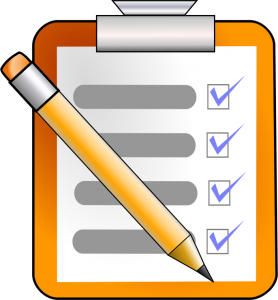 The members of the steering committee will continue to play a strong role in facilitating and tracking implementation actions. This includes any actions they were responsible for, as well as tracking other committees and sector’s actions and progress made towards achieving the plan’s outcomes. Ongoing communication is essential to successful implementation and achieving outcomes, therefore a regular reporting mechanism could be set up in order to provide regular evaluation of the plan.
The members of the steering committee will continue to play a strong role in facilitating and tracking implementation actions. This includes any actions they were responsible for, as well as tracking other committees and sector’s actions and progress made towards achieving the plan’s outcomes. Ongoing communication is essential to successful implementation and achieving outcomes, therefore a regular reporting mechanism could be set up in order to provide regular evaluation of the plan.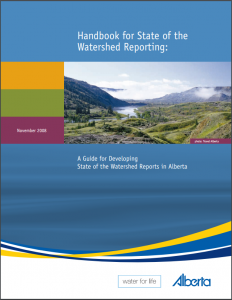
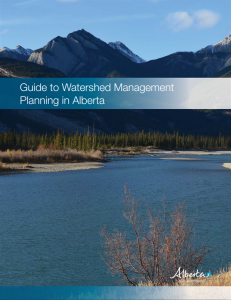
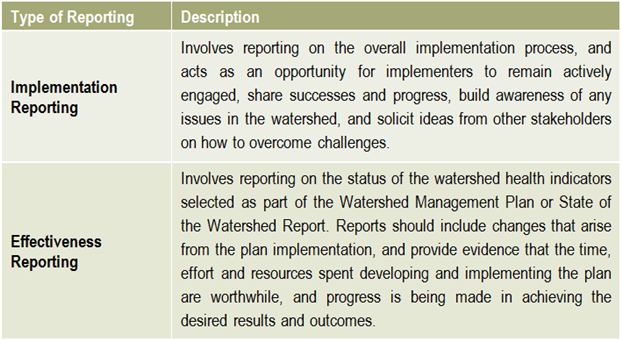 Reporting is an essential component of any watershed management planning and implementation process. There are two main types of reporting that should be shared with stakeholders on a regular basis: implementation reporting & effectiveness reporting.
Reporting is an essential component of any watershed management planning and implementation process. There are two main types of reporting that should be shared with stakeholders on a regular basis: implementation reporting & effectiveness reporting. There is no limit to the number or types of lake management actions, but they typically fall into the categories on the right.
There is no limit to the number or types of lake management actions, but they typically fall into the categories on the right.
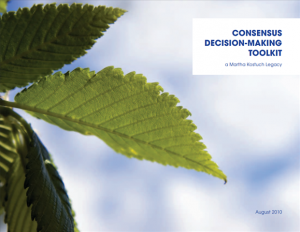
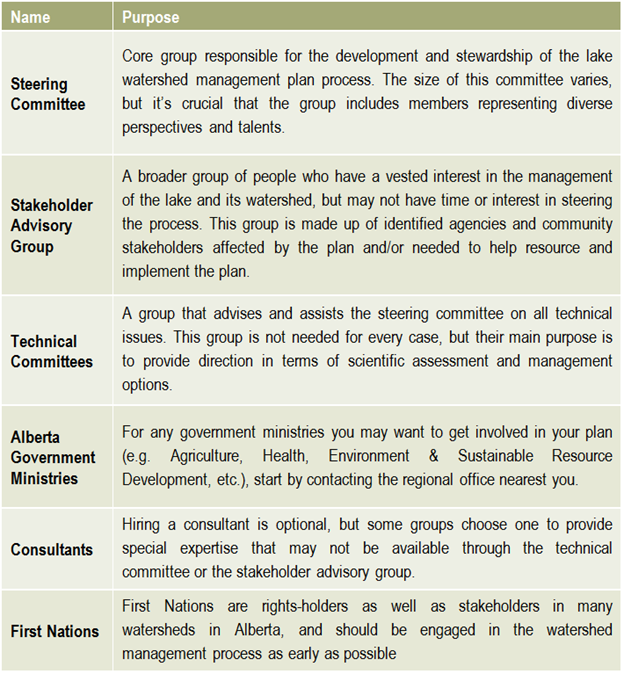 Helpful resources
Helpful resources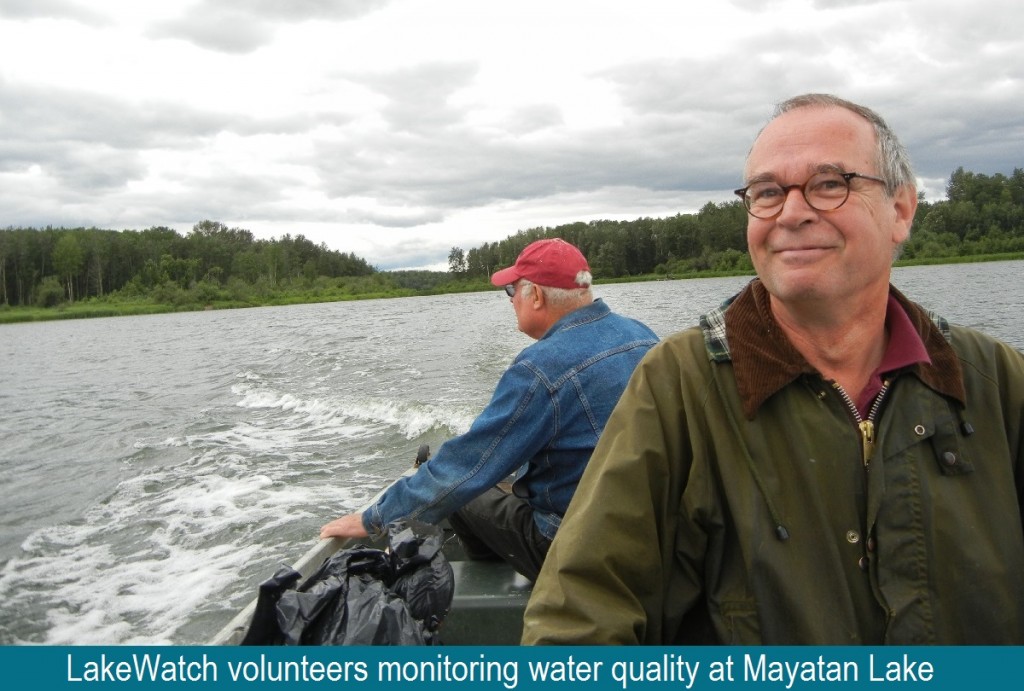 The development of a lake watershed management plan provides the guidance needed to implement activities, but the plan cannot be static. Monitoring the performance of your management actions is essential to understanding whether your goals have been met, and whether further actions are needed. Monitoring and evaluating the implementation and effectiveness of a lake watershed management plan allows assessment of progress towards the goals and objectives of the plan, identification of problems and opportunities, and a collection of critical information required when performing a 5 or 10 year review of the plan.
The development of a lake watershed management plan provides the guidance needed to implement activities, but the plan cannot be static. Monitoring the performance of your management actions is essential to understanding whether your goals have been met, and whether further actions are needed. Monitoring and evaluating the implementation and effectiveness of a lake watershed management plan allows assessment of progress towards the goals and objectives of the plan, identification of problems and opportunities, and a collection of critical information required when performing a 5 or 10 year review of the plan.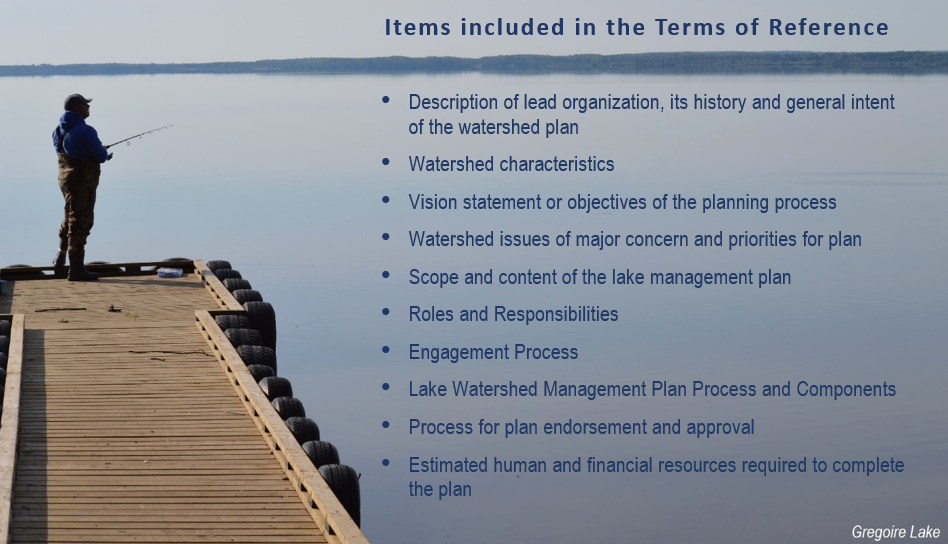
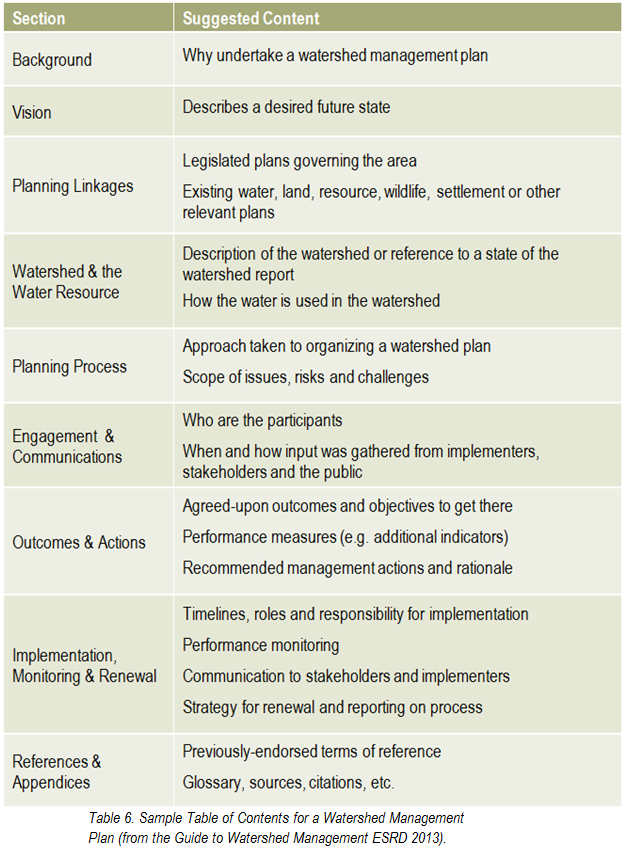
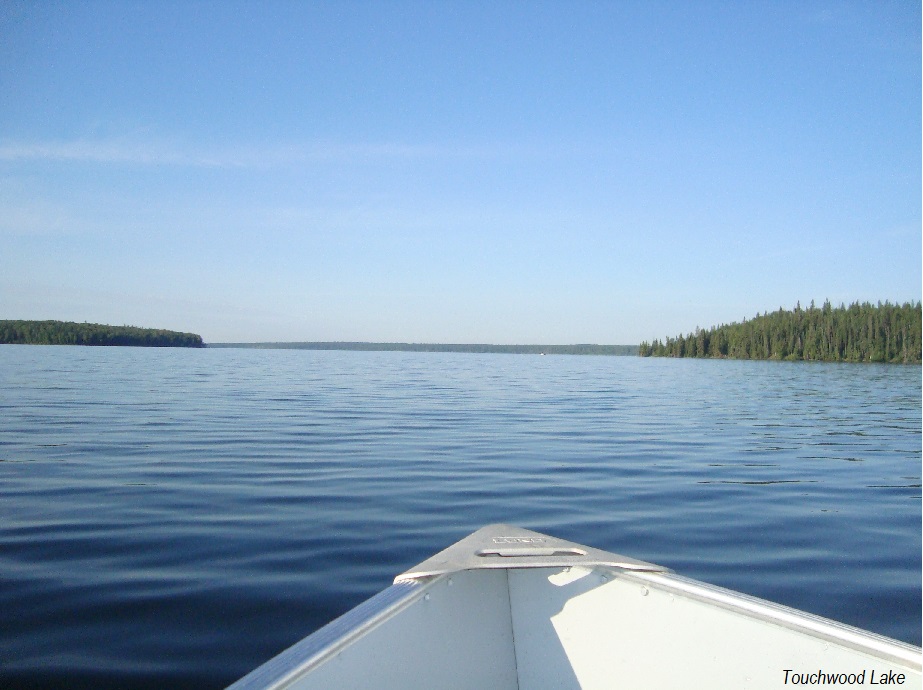 What has the monitoring results of the plan and of the indicators shown? Is there a need to modify the plan? It is important that the lake watershed management plan does not just sit on a shelf. Information gaps should be addressed, action items need to be managed, completed, and evaluated to best address the needs of the lake. Always keep in mind the vision: if the actions taken are not bringing the lake closer to that vision, then the plan needs to be modified. Consider updating both the state of the watershed and the lake watershed management plans at regular intervals to make sure that the actions taken were achieving the desired outcomes and to evaluate what work still needs to be done.
What has the monitoring results of the plan and of the indicators shown? Is there a need to modify the plan? It is important that the lake watershed management plan does not just sit on a shelf. Information gaps should be addressed, action items need to be managed, completed, and evaluated to best address the needs of the lake. Always keep in mind the vision: if the actions taken are not bringing the lake closer to that vision, then the plan needs to be modified. Consider updating both the state of the watershed and the lake watershed management plans at regular intervals to make sure that the actions taken were achieving the desired outcomes and to evaluate what work still needs to be done. Once a plan has been approved by all affected sectors and officially endorsed and released by the steering committee, then implementation can begin in full. Action projects can be large and comprehensive, or made smaller by staging projects over time or into modules that can be tackled one at a time. Fundraising is an issue that many community groups may find intimidating, but experience with programs such as the Pine Lake Restoration Program (see
Once a plan has been approved by all affected sectors and officially endorsed and released by the steering committee, then implementation can begin in full. Action projects can be large and comprehensive, or made smaller by staging projects over time or into modules that can be tackled one at a time. Fundraising is an issue that many community groups may find intimidating, but experience with programs such as the Pine Lake Restoration Program (see 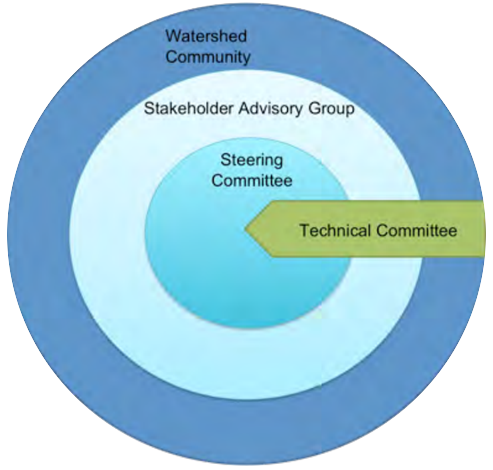 This graphic describes how the various committees and groups will work and interact together. The circle size depicts the approximate number of people involved, and the circles overlapping indicates that some individuals may reside in all of the circles and participate in multiple committees as part of the planning process. The technical committee is shown as an arrow, indicating that it is independent and has relatively few people, and yet it interacts with all of the groups. This graphic may look different depending on the lake and the people involved, and a detailed structure should be agreed upon and described in the plan’s Terms of Reference (Step 6).
This graphic describes how the various committees and groups will work and interact together. The circle size depicts the approximate number of people involved, and the circles overlapping indicates that some individuals may reside in all of the circles and participate in multiple committees as part of the planning process. The technical committee is shown as an arrow, indicating that it is independent and has relatively few people, and yet it interacts with all of the groups. This graphic may look different depending on the lake and the people involved, and a detailed structure should be agreed upon and described in the plan’s Terms of Reference (Step 6).